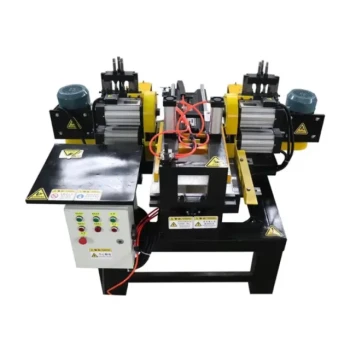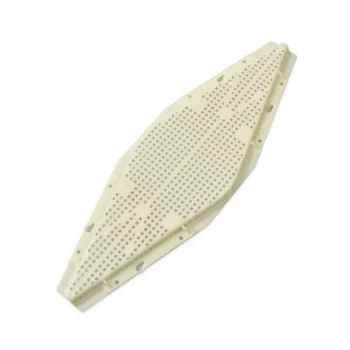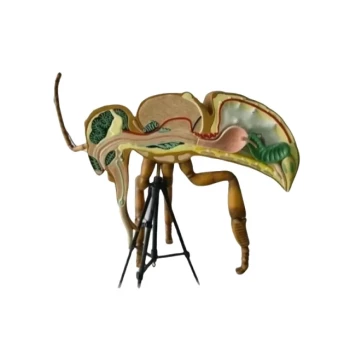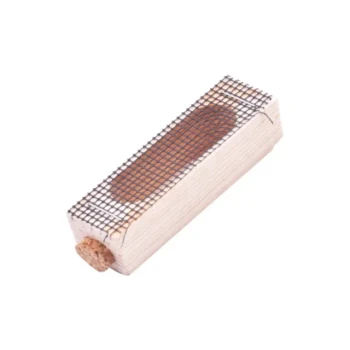The fundamental difference is that a bee package is a collection of individual bees with a queen, while a nucleus colony (nuc) is a small, pre-established hive. A package provides the raw components to start a colony from scratch, whereas a nuc gives you a functioning, miniature colony that is ready to expand.
Choosing between a nuc and a package is a critical decision for any beekeeper. Your choice is between the rapid, stable start offered by a nuc and the 'from scratch' build of a package, which requires more intensive initial support.
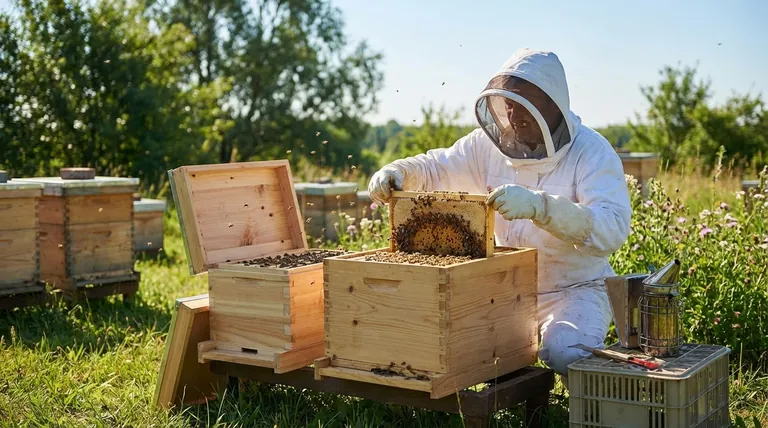
What is a Nuc? The "Plug-and-Play" Start
A nuc is the most straightforward way to establish a new honey bee colony. It provides a significant head start by giving the bees a pre-built foundation to work from.
A Complete, Functioning Mini-Hive
A nuc is not just a box of bees; it's a small, working colony. It typically includes four or five frames of drawn comb, a proven, laying queen, and bees in all stages of development—brood (eggs and larvae), young nurse bees, and adult foragers.
Immediate Productivity
These frames also contain stored resources like honey and pollen. Because the colony is already established with emerging workers, they can begin foraging and expanding the hive almost immediately after being installed.
What is a Bee Package? The "Blank Slate"
A bee package is essentially a starter kit with no pre-existing infrastructure. It contains a loose quantity of adult bees and a queen, who is kept separate in a small cage.
A Collection of Individuals
Unlike a nuc, a package contains no frames, no comb, no brood, and no stored food. The bees must build their entire world—drawing out wax comb for brood and storage—from nothing.
The Critical Establishment Phase
The colony's first major task is to build comb, which requires a significant amount of energy. This means a package colony requires extended and consistent feeding, especially if installed on frames with no previously drawn comb.
The Installation Process: A Key Differentiator
The method of introducing the bees to their new hive differs significantly between the two options and reflects their fundamental nature.
Installing a Nuc: A Simple Transfer
Installing a nuc is a calm and simple process. You carefully lift the frames out of the nuc box and place them in the center of your new hive body. The colony's structure remains intact.
Installing a Package: A More Involved Process
Installing a package requires shaking the mass of bees into the hive. The caged queen is placed between frames, and the workers will free her over several days by eating through a sugar plug, which helps ensure they accept her.
Understanding the Trade-offs
Neither option is universally "better," but they present different risks, costs, and timelines that are critical for a beekeeper to understand.
Nucs: Faster Buildup, Lower Risk
A nuc provides a colony that is already productive. This faster start dramatically increases the chance of success, especially for new beekeepers. Workers are emerging immediately, and the queen is already accepted and laying.
Packages: Lower Initial Cost, Higher Effort
Packages are generally less expensive upfront. However, this lower cost is offset by the need for more intensive management, including prolonged feeding. There is also a higher risk of the colony failing to establish or rejecting the new queen.
Making the Right Choice for Your Goal
Your decision should be based on your experience level, goals for the first year, and how much hands-on management you are prepared to perform.
- If your primary focus is a reliable start with a higher chance of first-year success: A nuc is the clear choice, as it provides a stable, established foundation that minimizes early-stage risks.
- If your primary focus is a lower initial cost and you are prepared for more intensive monitoring: A package is a viable option, but you must be committed to diligent feeding and observation.
Ultimately, understanding these differences empowers you to select the starting method that best aligns with your beekeeping philosophy and resources.
Summary Table:
| Feature | Bee Package | Nucleus Colony (Nuc) |
|---|---|---|
| Definition | Loose bees & a queen in a cage | A small, pre-established hive on frames |
| Contents | Adult bees, caged queen | Frames with drawn comb, brood, food, & a laying queen |
| Installation | More involved; shaking bees into hive | Simple; transferring frames |
| Initial Cost | Lower | Higher |
| Time to Build-up | Slower; requires comb building | Faster; immediate productivity |
| Best For | Cost-conscious, hands-on beekeepers | Reliability, higher success rate, beginners |
Ready to Start Your Apiary with Confidence?
Whether you're a commercial apiary scaling up or a distributor sourcing reliable equipment, choosing the right foundation is key to a thriving operation. HONESTBEE supplies beekeepers with the essential supplies and equipment needed for success, from nuc installation tools to package feeding systems.
Let us help you build a stronger hive. Contact our expert team today to discuss your specific needs and explore our wholesale-focused product lines.
Visual Guide
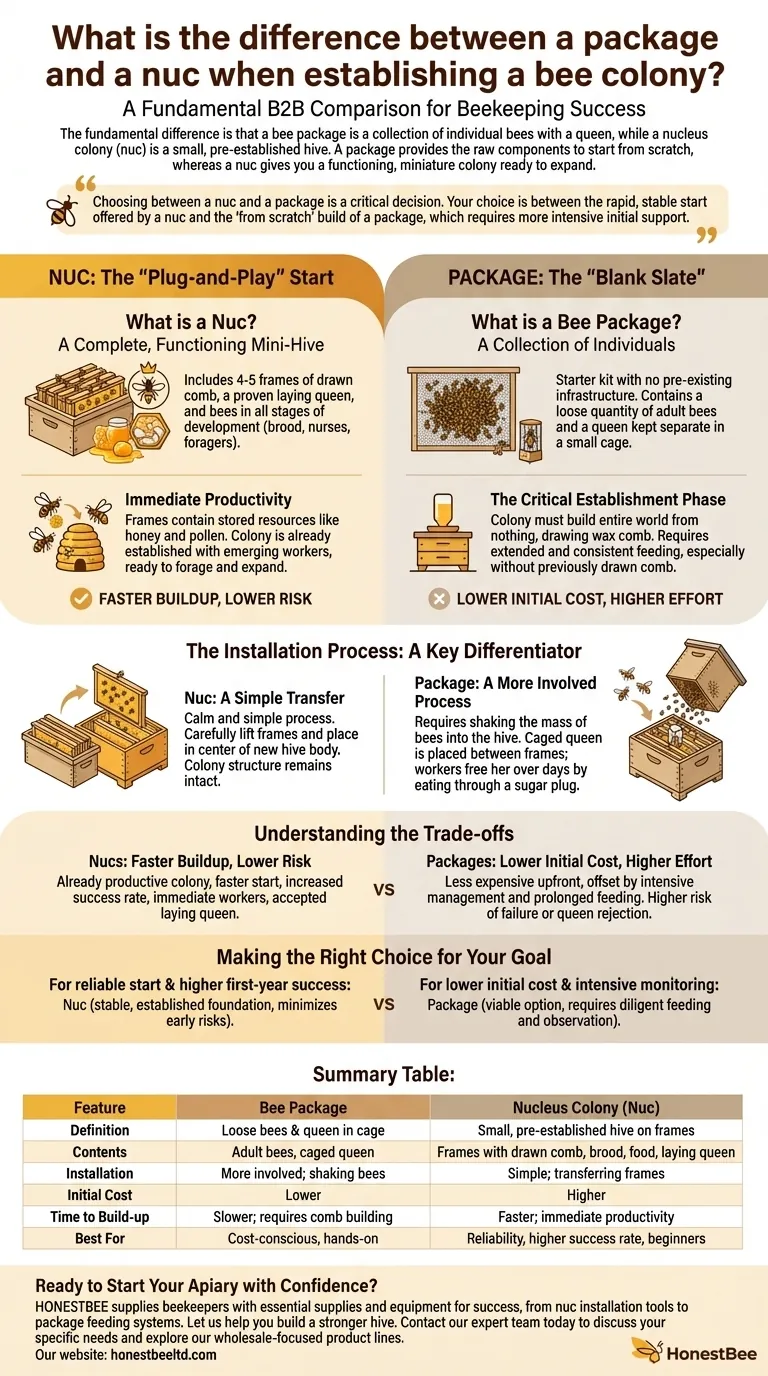
Related Products
- 5 Frame Wooden Nuc Box for Beekeeping
- HONESTBEE Professional Entrance Bee Feeder Hive Nutrition Solution
- Honey Flow Garden Bee Hive Flow Hive Best Beehive for Beginners
- Plush Bee Mascot Costume Professional Engaging Brand Ambassador
- Professional Insulated Plastic Bee Hives
People Also Ask
- What is the most common type of standard nuc? The 5-Frame Nuc Explained
- How many frames does a typical wooden nuc box hold? A Guide to Choosing the Right Size
- What is the purpose of having a nuc in beekeeping? Build a Resilient & Productive Apiary
- What are the benefits of starting a new bee colony in a nuc box? Boost Colony Success with Efficient Beekeeping
- What is the advantage of overwintering a nucleus? A Strategic Asset for Beekeeping Success








